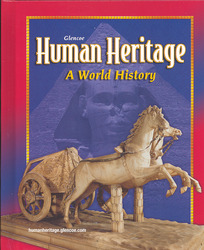
Human Heritage: A World HistoryChapter 28: The RenaissanceThe RenaissanceAround A.D. 1300, scholars in western Europe developed a new interest in classical writings, or the writings of the ancient Greeks and Romans. They also began to accept some Greek and Roman ideas. One idea that the scholars embraced was a belief in the importance of people. Their work caused a break in the thinking of the Middle Ages and led to a new age. Chapter 28 is about the Renaissance, during which people became less concerned with the mysteries of heaven and more interested in the world around them. Section 1 explains how the Renaissance began and flourished in the Italian city-states, including Florence, Venice, and the Papal States. The section focuses on the changes that took place in art and in the daily lives of people in those places. A chart details Renaissance manners. Section 2 describes how France was influenced by the Italian Renaissance and focuses on literature and architecture. Section 3 explains how the Renaissance spread to Germany and Flanders and focuses on developments in religion and in painting and other arts. Section 4 focuses on how the Roman Catholic Church and the government influenced the Renaissance in Spain and highlights developments in the arts and theater. A chart lists the accomplishments of Renaissance people throughout western Europe. Section 5 discusses how the English monarchy promoted the Renaissance in England and focuses on poetry, music, and the plays of William Shakespeare. |  |















